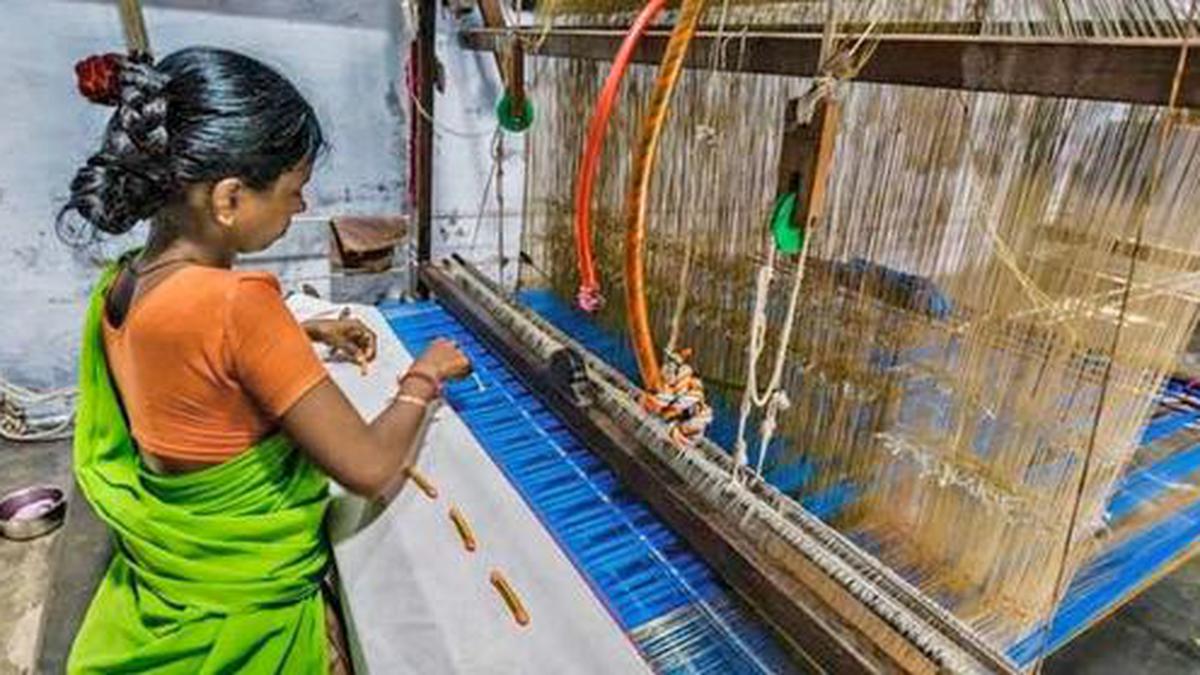
The warp and weft of gloom and unkept promises Premium
The Hindu
Life of a powerloom worker in Chittoor district, struggling with alcoholism, poverty, and lack of government support.
Downing alcohol after work is all Mallesh (name changed to protect identity), 31, can think of as he toils away at a powerloom unit in Madanapalle town. Beginning his day early, Mallesh spends long hours behind the loom, its loud hum and the thick, permeating smell of dye, a necessary evil he enjoys. Mallesh finishes weaving two silk sarees by the evening, and leaves for home with his daily wage of ₹1,500 for a job well done.
Before going home, Mallesh pays a quick customary visit to the local ‘wine shop’, and ends up spending half of his wages there, sometimes even more. The liquor helps dull his body ache, or so Mallesh believes, and he hits the bed soon after going home. Mallesh’s life is like one of thousands of loom workers across undivided Chittoor district in Andhra Pradesh.
At the end of every month, workers like Mallesh are left with little to no money, and all too often, end up taking loans from private moneylenders (who, in some cases are their employers), to meet the expenses of important family events, such as the wedding of a daughter. Many abscond to their native villages unable to repay the money, only to be quickly replaced by a new batch of workers.
Those who persist in the trade soon end up with chronic health issues brought about by years of drinking. This leads to a loss of livelihood and a lifetime of penury. The youth are slowly becoming sceptical of following in the footsteps of their parents, and are keen on migrating to professions that pay more and places with more opportunity.
T. Malathi, 28, the daughter of a weaver from Chenetha Nagar, has migrated to Bengaluru where she works for an MNC as a software engineer. She is one of a growing number of youth to have shunned the occupation due to its lack of sustainability, and is urging her parents to join her in Bengaluru. But her ageing parents, who have known nothing but weaving all their lives, find it difficult to concede to her wishes.
“I see no point in carrying on my family occupation, but many families, despite living in penury, have no other option but to continue in the trade thanks to illiteracy,” Malathi says. The employers running the powerloom or handloom units are not much better off. With dwindling demand for their product on one hand and rising input costs on the other, the weavers barely manage to stay afloat.
The undivided Chittoor district held the weaver towns of Madanapalle with about 45,000 weavers; Chenetha Nagar, just 3 kilometres away, with 2,000 weavers; and Nagari town with about 30,000 weavers, as per the State Department of Handlooms and Textiles. In a district reorganisation exercise conducted by the State government two years ago, Madanapalle became a major municipality in the carved-out district of Annamayya, while Nagari, about 150 km away, remained part of the residual district of Chittoor. Since it is on the border of Tamil Nadu, Nagari has several weaver migrants from the State.

Lumara, a new resto-bar in Bengaluru, takes inspiration from the Mediterranean style of architecture
Located in the heart of the city, Lumara has innovative cocktails, and a global menu












